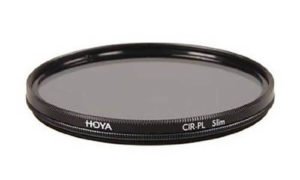Adapter ring in photography
Last update: 04/19/2024
Our blog continues to grow thanks to you, our readers. This post may contain affiliate links, which means we can earn a small commission if you make a purchase through them, at no extra cost to you. This helps us to continue to bring you more and support our work!
If you are new to photography, you may not have heard of the adapter ring yet? Also known as mount adaptor/step-up ring – step-down ring, it is one of the photo accessories that is really useful for people who are looking to save money!
It can be found under several names on e-commerce sites and as a result, everyone gets a little bit lost. This accessory is not the most well-known for people practicing photography and indeed it is not the first thing that comes to mind in terms of accessory.
In this short article, I will tell you everything you need to know about these adapter rings: what are they really for? How to choose them? How to use them? And finally, the inconveniences of this accessory. I will end the article on a specific point concerning the adapter rings which is useful when using a filter holder system, in particular for neutral density filters (ND) or graduated neutral density filters (GND). Let’s get right to the point.
In fact, I use adapter rings for my filter holder on a daily basis. I recently reviewed the new 100mm NISI V7 system.
As Amazon Associates, we earn from qualifying purchases. It means that, all the links linking to camera gear in this post are redirecting to Amazon stores.
What is an adapter ring and what is it used for?
The adapter ring is simply a circular accessory that has the particularity of having threads on both sides of the filter with two different diameters. There are many combinations of diameters on the market, we will look further into this below.
These adapter rings allow you to use a circular camera lens filter with a different diameter from the one of your lens. What does that mean in practice? To put it simply, you can use your 82mm polarizing filter on a 77mm diameter lens… pretty cool, right? There are two types of rings: step-up ring and step-down ring. You will therefore see rings with two diameters inscribed, for example: 77mm – 82mm.


Examples of adapter rings – More details on Amazon
The main advantage of using an adapter ring is mainly economical! Indeed, many photographers use circular filters for their pictures. The problem is that we often have several lenses with variable diameters… The adapter rings therefore solve this problem, because you will be able to use a filter for all your lenses (or almost). Rings of this type are mainly used on circular polarizing filters (CPL) and simple or variable neutral density filters (ND).
How to choose these adapter rings?
Here is what you need to know when choosing your rings. Nothing too complicated here!
Step up / Step up down, let's take stock
As mentioned in the introduction, there are two types of rings. Conventionally, the diameter of the lens on which the ring is to be mounted is always mentioned first. The diameter of the filter that will be attached to it comes second. For example, a 77mm – 82mm ring will be mounted on a 77mm lens and it will be able to accommodate 82mm filters. This is called a “step up” ring. In the vast majority of cases, this is the type of ring you will use.
On the other hand, a 55mm-52mm ring can be mounted on a 55mm diameter lens and can accommodate a 52mm filter. This is called a “step down” ring. But can you see the problem here? There is a risk of vignetting on the image where black on the edges will appear when using this type of ring depending on the focal length used. Indeed, the diameter of the filter is smaller than the lens and that can be clearly seen on the image. This is why these rings are more rarely used.
The Quality
Even though this is just a ring, some photographers agree that the quality can really vary from one ring to another. You either have the possibility of buying cheap rings that will do the job, or get better quality rings, which, just between us, don’t cost that much either. Here is an example of a Hama brand ring to fit an 82mm filter on a 77mm lens. Here is a set of 22 step-up-Step-down rings that have a very good reputation from the K&F brand.
The difference is mainly in the rigidity and the surface treatment of the ring. Many photographers talk about a low-end adapter ring that locks when you tighten a little too much, for example, even deforms or gets stuck.
Choose your maximum diameter
As mentioned above, there is a good chance that you will choose a step-up ring. Why? Simply because if you imagine that you have 3 different diameter lenses, let’s say: 82 mm, 77mm, 72mm. All you have to do is buy a single quality 82mm filter and you’re done. Then, all that is left is to buy the 2 adapter rings that fit well and place them on your lower diameters. You will not risk any vignetting and you have only purchased one filter.
For the purchase of your camera lens filter with the largest diameter, I really advise you to see this acquisition as an investment. Don’t skimp on 10$ at the risk of ending up with a poor-quality filter.
Here are three examples of quality filters (polarizing filter, neutral density/ND, and ND Variable).
The different diameter adaptations
Another point where it is necessary to say a few words. Indeed, when you look at the well-known rings on the shopping sites, you will realize that there are a very large number of different models. Even if you only look at the step-up models which are probably the ones you’re interested in, you’ll find these rings, for example:
So if you haven’t understood it already, you can find almost any arrangement of diameter you want. Well, I haven’t checked out all the possibilities, so it’s possible that you won’t find exactly what you’re looking for in one ring. I think in particular if you want to place an 82mm polarizing filter on a 55mm lens. Well, actually, I just checked, and it still exists, but you get the idea?
The point is, if you don’t find the ideal ring, you will have to stack several rings on top of each other to successfully adapt the filter to your lens with a smaller diameter. On the other hand, you often have the possibility to buy a “step-up set” of about ten rings for example. So, with this you should be able to find your happiness.
How can they be used in practice?
Some tips that can be quite useful:
- Never over-tighten the adapter ring too tightly, as this may cause it to jam, especially on low-end rings,
- It is often advisable to first screw the ring on the lens, and then, the filter on the thread.
The disadvantages of adapter rings
Even if these rings can be very useful, don’t forget the disadvantages!
- You cannot really combine this system with other filters, let alone with a filter holder to use a GND filter or an ND filter,
- There is almost no possibility of being able to use a lens hood (although there are cheap possibilities at Hoya),
- Do not forget the risks of blockages and deformation when unscrewing,
- If step-down rings are used, there is a significant risk of vignetting,
- Depending on the desired diameter adaptations, it may be necessary to stack several rings
Special adapter rings for filter holders
It is not really the purpose of this article to go into such level of detail, but for people who are fans of filters, you will probably find that many of you use filter holders and that they allow you to use a whole combination of different filters, as well as polarizing filters, ND filters and/or GND filters. They have the advantage that they can also be used on a set of lenses of different diameters, thanks to an adapter ring.
I personally use the 82mm wide angle adapter ring to place my Lee filter holder on my Canon 24-70mm f/2.8 L IS.
Therefore, depending on the filter holder you are going to use and especially the diameter on which you are going to place it, make sure to choose the right adapter ring.
That’s it, I’ve come to the end of this short technical article on adapter rings. You should be able to decide in a more informed way now! I am personally a big fan of camera lens filters, preferring to spend time taking pictures rather than behind a computer for post-processing. If you like accessories and gadgets, I invite you to read the article on travel photo accessories!
See you soon

Written by Sylvain PONS
I've been passionate about photography since 2010, learning as I went along. Today, I dedicate myself to guiding others in their choice of camera gear and sharing a variety of tips to improve their photography skills.
Despite our care, a mistake may have slipped into this article. If you find any, please don't hesitate to let us know so we can correct it as soon as possible and keep our information up-to-date!














